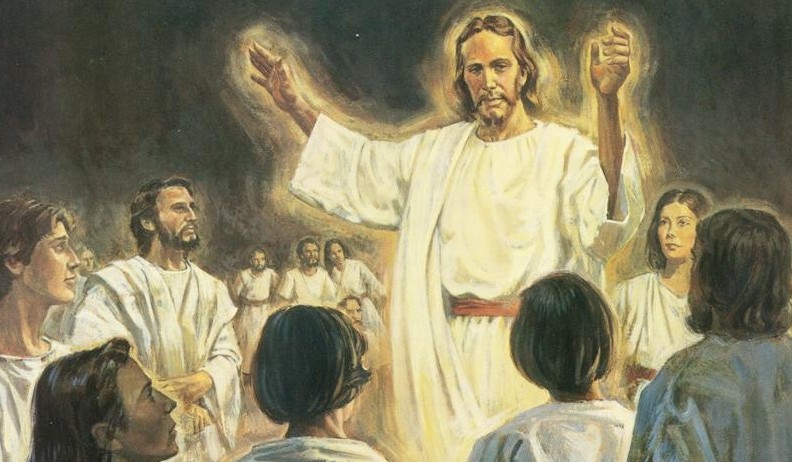Question
Gramps,
If Emma was Joseph Smith’s first wife, why wasn’t he sealed to her first?
Esteban
Answer
Esteban,
Thank you for an excellent question.
To comprehend the intricacies of Joseph Smith’s marital sealings, it’s essential to understand the concept of “eternal sealing” within the theology of The Church of Jesus Christ of Latter-day Saints (the Church). Eternal sealing refers to the belief that marriages performed in the temple are binding not just for mortal life but for eternity. This doctrine underscores the significance of family and eternal relationships in Latter-day Saint faith.
Joseph Smith introduced the practice of plural marriage, which involved marrying multiple wives, as part of his theological revelations. These sealings were believed to extend familial bonds beyond death, offering a form of eternal companionship for both the living and the deceased. However, the timing and order of these sealings, particularly concerning Emma Hale Smith, Joseph’s first wife, have been subjects of extensive debate.
Emma Hale Smith holds a pivotal position in Joseph Smith’s life, not only as his wife but also as a steadfast supporter of his prophetic mission. Their marriage, conducted in 1827, was foundational to both their personal lives and the early establishment of the Church. Emma’s unwavering support provided Joseph with the stability needed to navigate the challenges of founding a new religious movement.
Given the depth of their relationship, one might naturally assume that Emma would be the first to be eternally sealed to Joseph. However, historical records suggest a more complex reality. Emma initially was not sealed blessedly for eternity with Joseph. This decision was influenced by several factors, including doctrinal developments and personal circumstances that unfolded over time.
A critical piece of this puzzle is the fate of Joseph’s brother Hyrum’s first wife, Jerusha. According to accounts, Joseph was troubled by Jerusha’s death before the concept of eternal marriage was revealed to him. This theological gap meant that Jerusha could not be sealed to Hyrum in the same way as later practices would allow.
Joseph addressed this concern by assuring that Jerusha could be sealed to Hyrum posthumously through a principle analogous to baptism for the dead. This approach provided a form of eternal bond that respected both Jerusha’s passing and the nascent doctrine of eternal sealing. Consequently, the focus shifted towards forming eternal covenants with living spouses.
The concept of eternal marriage was not a static doctrine but evolved alongside the Church’s teachings and Joseph’s revelations. Initially, the idea of sealing was more closely associated with family units rather than individual husband-wife relationships. Over time, as Joseph received further revelations, the Church articulated the importance of eternal marital bonds.
This doctrinal evolution influenced Joseph’s actions and decisions regarding his marriages. The sealing process required both legal and spiritual preparations, and Joseph prioritized these as the understanding of eternal marriage deepened. Additionally, societal pressures and the need to establish a robust religious community may have accelerated the formalization of eternal sealing practices.
Despite not being initially sealed to Joseph, Emma was later granted the opportunity to be eternally sealed. This sealing was significant for several reasons. It reaffirmed the sanctity and primacy of their marital bond, bridging the temporal and eternal aspects of their relationship.
Emma’s sealing also had broader implications for the Church’s understanding of eternal marriage. It highlighted the flexibility and adaptability of doctrinal practices in response to personal circumstances and revelations. Furthermore, it underscored the importance of both foundational and plural marriages within the framework of eternal family structures.
Beyond doctrinal considerations, various societal and personal factors influenced the order in which Joseph was sealed to his wives. Plural marriage was a contentious practice, both within and outside the Church, and the timing of sealings could reflect strategic decisions aimed at stabilizing the community and mitigating external pressures.
Emma, as the first and primary wife, served as a stabilizing force within the family and the Church. Sealing her first may have been seen as detrimental to the Church’s public image and unity, especially during its formative years. By prioritizing other sealings, Joseph and the leadership could have aimed to present a cohesive and strategically managed community.
Furthermore, personal dynamics within Joseph’s family life, including the relationships between his wives and their individual roles within the Church, likely played a role. Balancing these complex relationships while adhering to evolving doctrinal revelations required nuanced decision-making that influenced the order of sealings.
The question of why Joseph didn’t get sealed to Emma first is a window into the intricate tapestry of doctrinal development, personal commitment, and societal context that shaped The Church of Jesus Christ of Latter-day Saints in its early years. While Emma was initially not sealed to Joseph in an eternal sense, subsequent revelations and circumstances allowed for such a sealing, reinforcing the eternal bonds that are central to Latter-day Saint theology.
Understanding this sequence requires appreciating the dynamic nature of religious doctrines and the profound personal relationships that influence their evolution. Joseph Smith’s journey reflects a balance between divine inspiration and practical leadership, ensuring that the foundational principles of eternal family remain a cornerstone of the faith.
As the Church continues to grow and adapt, the lessons from its early sealings remind adherents of the enduring importance of both individual relationships and collective doctrinal commitments. The story of Emma and Joseph’s eternal sealing serves as a testament to the complexities and depths of faith, love, and eternal bonds in the Latter-day Saint tradition.
Gramps







